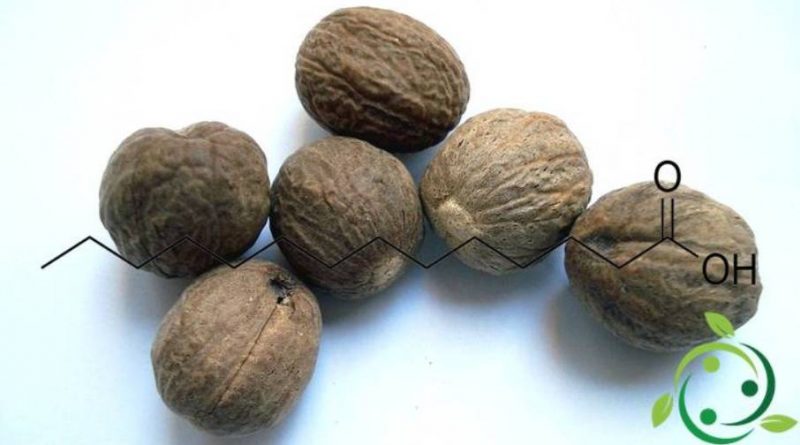Myristic Acid
Myristic Acid
Myristic acid, whose term in the official IUPAC nomenclature is tetradecanoic acid, is an organic acid with 14 carbon atoms with brute or molecular formula: C14H28O2.
Myristic acid was discovered by Playfair L. in 1841 in nutmeg, which is the seed of the tropical tree Myristica fragrans, from which it takes its name. Among other things, the butter obtained from fats of nutmeg is 75% trimirystin, the triglyceride of myristic acid.
Myristic acid is a saturated fatty acid of the long chain fatty acid subgroup.
They are foods rich in myristic acid, in the form of ester of glycerol, many fats and oils of both animal and vegetable origin.
It is present in modest quantities, which never exceed 1.5 g / 100 g of edible portion, in animal fats, such as meat, eggs, milk, fish, molluscs, and crustaceans; the maximum content is in the eel, with 1.4 g and in the herring with 1 g / 100 g of edible portion.
Its presence is an exception in fats present in milk derivatives such as: cheeses (especially seasoned ones), such as eg. Parmesan, with 3.4 g / 100 g of edible portion; it is also present, among animal fats, particularly in butter with 8.3 g / 100 g of edible portion.
Myristic acid is also present in a significant way, in the fats and oils of vegetable origin, in coconut oil, with about 17 g / 100 g of edible portion. In other fats and vegetable oils only palm has concentrations that reach 1 g / 100 g of edible portion, while in margarine it does not exceed 0.86 g / 100 g of edible part, while it is absent in peanut butter.
In the fruit it is present in high quantities only in the coconut, both dried, 9.5 g, fresh, 5.4 g / 100 g of edible portion and is, moreover, present in small quantities in a few cereals such as, for example. in corn, which is the one that contains the most, with 0.28 g / 100 g of edible portion.
It is instead absent in legumes.
Myristic acid is used in cosmetics and is used as an ingredient in soaps and shaving creams, often in the form of the myopic isopropyl ester.
Warning: The information given is not medical advice and may not be accurate. The contents are for illustrative purposes only and do not replace medical advice.

